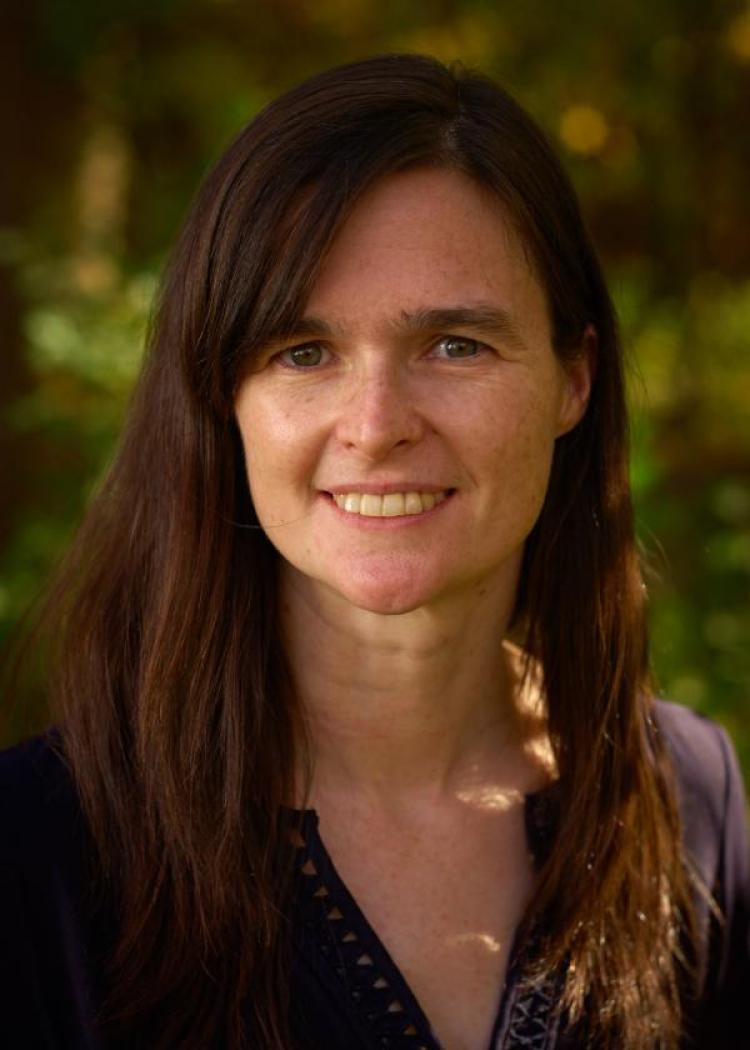Researchers at the University of Colorado Boulder have been awarded $1.1 million from the U.S. Environmental Protection Agency (EPA) for two projects to help school districts and communities reduce exposure to harmful pollution from wildland fire smoke.
CU Boulder is among nine institutions across the country receiving a combined $7 million under EPA's Science to Achieve Results (STAR) program for research to address health risks from wildland fire smoke.
"As wildfires become more frequent and severe, we are working to effectively communicate the risks of smoke exposure to impacted communities," said Wayne Cascio, acting principal deputy assistant administrator for science in EPA's Office of Research and Development. "The research we are funding will help develop strategies to prevent and reduce the health impacts of smoke from wildfires and prescribed fires."

Colleen Reid.
Colleen Reid, assistant professor of geography and research associate at the Institute of Behavioral Science at CU Boulder, will receive $549,919 to deploy low-cost particulate matter sensors to compare indoor smoke levels in Denver-area schools and homes. The results of this effort will be used to develop health guidance for school districts and inform decisions about school closures to protect student health.

Marina Vance.
Marina Vance, assistant professor of mechanical and environmental engineering at CU Boulder, has been awarded $549,000 to assess the transport and presence of wildfire particulate matter in single-family housing in the West and to evaluate and develop practical interventions to help people reduce indoor exposure to harmful particulates. The results of this work will be shared on YouTube, through infographics and in blog posts to educate citizens about options to reduce exposure and associated health risks.
Wildland fire smoke-both from wildfire and prescribed burns-is made up of a complex mixture of gases and fine particles produced when wood and other organic materials burn. The biggest health threat from smoke is from fine particles. Outside or indoors, exposure to these microscopic particles can cause burning eyes, runny nose and illnesses, such as bronchitis.
"From a health perspective, the particles-that dark cloud that you see when you look at the smoke plume-are most concerning. They are so tiny they don't fall to the ground with gravity and, unlike larger particles, they don't get stopped in the trachea or nose when you breathe them in," said Reid in a recent conversation with CU Boulder Today.
Additionally, fine particles can aggravate chronic heart and lung diseases and are linked to premature deaths in people with these conditions. Smoke also contains toxins that can cause cancer or other serious health effects.
The best way to reduce one's exposure to smoke from fires is to remain indoors when air quality is poor. However, more research is needed on how to reduce indoor exposure to these harmful particles, as homes are not completely sealed off from outside air.
"We are looking forward to studying how wildfire particulate matter enters homes and to evaluate affordable ways to reduce people's exposure to wildfire particulate matter in their homes," said Vance.
Additional institutions receiving research grants as part of EPA's Science to Achieve Results (STAR) program include: Desert Research Institute, Reno, Nevada; Georgia Institute of Technology, Atlanta, Georgia; Ohio State University, Columbus, Ohio; Portland State University, Portland, Oregon; Public Health Institute, Oakland, California; Stanford University, Stanford, California; University of California, Berkeley, California; and University of Washington, Seattle, Washington.






